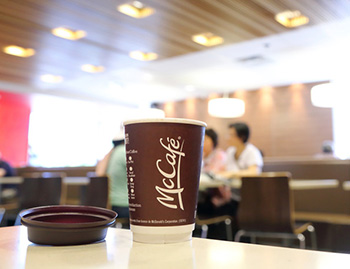Does Franchising Kill Innovation?
By Ed Bernacki | September 30, 2008
Lessons to learn from the failure of Starbucks in Australia
 Starbucks, the legendary innovator in the world of coffee recently announced two major changes that cracked its air of invincibility. While it closed 600 stores in the USA, the real lesson is found in studying what happened in Australia. It killed 61 of 84 outlets, that's 70 percent of its current operation.
Starbucks, the legendary innovator in the world of coffee recently announced two major changes that cracked its air of invincibility. While it closed 600 stores in the USA, the real lesson is found in studying what happened in Australia. It killed 61 of 84 outlets, that's 70 percent of its current operation.
The reason for the Australian failure has nothing to do with the retraction in the USA. It has everything to do with what is wrong with franchising: success changes a business from listening to customers as individual 'people' in order to offer them something unique and innovative into one that views people as a market to be exploited.
I lived in Australia before returning to Canada. I am in Melbourne writing this article in one of the hundreds of unique cafes that spread throughout the city. People know their coffee. In the entries on coffee in the Encyclopedia of Melbourne, the beginnings of its coffee culture trace back to the street stalls of the 1850s that offered caffeine to rushed city workers. The coffee culture then re-emerging as continental coffee houses in 1920s and 1930s.
By the 1950s, new Italian migrants helped redefine coffee for Melbourne once again, serving it up in espresso cups instead of percolators. Yet two of the key proponents of the espresso bar were father and son team Harry and Peter Bancroft, who in 1953 secured the rights to manufacture Gaggia coffee machines and set up a cafe locally. This act enabled enterprising migrants to open similar businesses.
A business writer wrote, "So, purists won. The humble cappuccino has triumphed over its Orange-Mocha-Frappa cousin. The latter probably never stood a chance. Starbucks coffees may be weak, poorly made and overly reliant on syrups to mask their flavour, but they better certainly better than what had been previously available (in the USA).'
I asked the 26 year old waitress in the Romcaffe where I write this article about Starbucks. She said the company was 'trying to push their style in a place that already had a style. There is a pride here in the quality of the coffee.' When I asked her about the taste of Starbucks, she grimaced and said, 'Yuk.'
You get the point. What may seem like an innovation in one market is mediocre in another. So when did Starbucks stop listening to its customers? When did its air of invincibility begin? What lessons did it fail to learn?
In about 2004 I read of research by the University of Melbourne that looked at people's perception of Starbucks to understand why it had not taken over the coffee business. It found:
- The average Aussie coffee drinker did not like the taste. People know what good coffee tastes like. It was not Starbucks.
- They also resented paying $4.00 for coffee and not being served. Its competitors will take your coffee to your seat once it is ready. You do not have to stand ideally by waiting for your coffee.
This is something Starbucks should have noticed and leveraged had it been listening. The innovation game takes two players:
- Business executives who want to innovate and;
- Consumers who are open to try new and different products and services.
Clearly Starbucks failed in the first instance. The company should have taken a lesson from McDonalds. I am genuinely impressed by McDonalds in Australia. Most have now invested in adding a McCafe. Gone are the hard plastic cubicles and the sterile environment. Now you can experience music, free newspapers, big screen TVs, and a whole new layout. The McCafe adds some sophistication with café style tables and chairs. The latte for $3.95 is good as are its muffins.
McDonalds seems to get it. If you want to compete in different markets, you must be seen as innovative in that market. While some may flock to an American styled franchise to sample it, it must convince people to come back.
The other aspect is which may support the creation of more innovative products and services is the attitude of customers. It is crucial that consumers demand quality, originality and a sense of authenticity in what they invest in. When consumers accept the status quo, the corporate world can sit back and essentially stop competing in the design and delivery of products and services. Only by being demanding will companies be forced to continue to innovate. One of the tired clichés of this work is: Innovate or Die! This is only true if their customers kill them.
Does Starbucks sell a mediocre product? It depends on who you ask. The Australia consumer said yes. Perhaps the lesson for Starbucks is to focus on markets that do not already have a culture of coffee.





